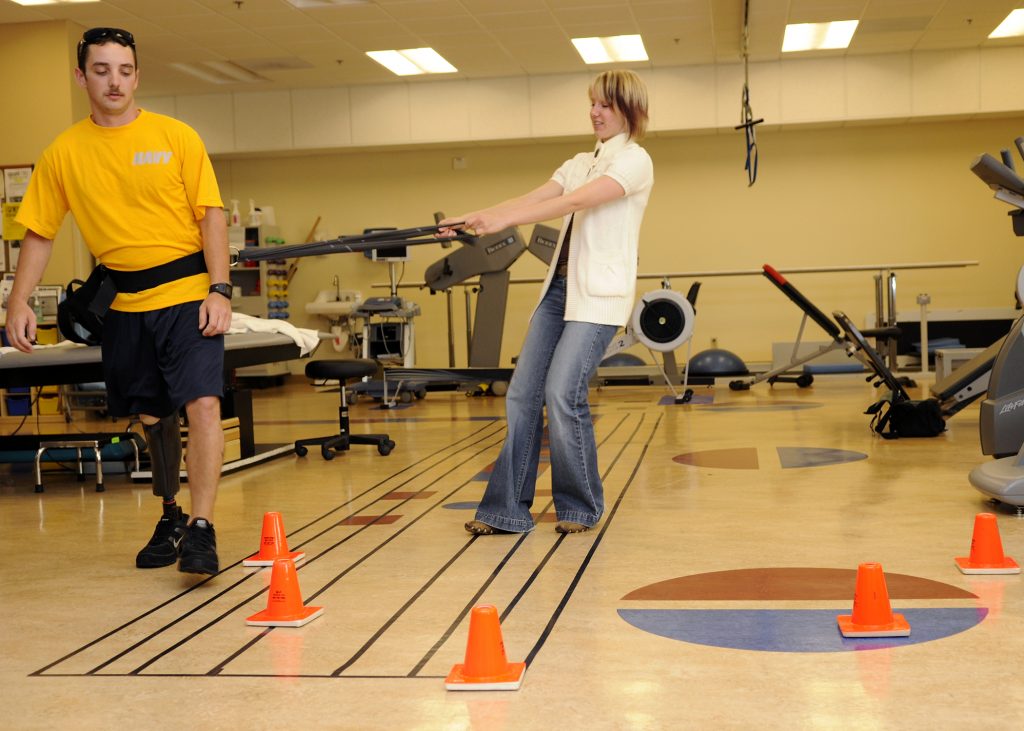If you have a desire to offer assistance to patients that have been directly impacted by limb loss, you should elect to become involved in the specialization of physical therapy for amputees. In this profession, you are more than just a therapist.
You are a beacon of hope that aids in helping individuals that have experienced the loss of a limb to experience an increased range of motion, a decrease in pain and discomfort, and a highly functional recovery that will help in establishing their new “normal”.
In this detailed guide, you will learn about the physical therapy amputee specialization field. If you have a desire to transform the lives of patients, continue reading to learn more.

The Goal of Amputee Rehabilitation
If you elect to get involved with the physical therapy amputee specialization, you are partaking in the journey that will aid in maximizing each of your patient’s level of functional mobility, while striving to minimize the number of deficits that are experienced as a direct result of limb loss. You will be directly responsible for enhancing the quality of life that your patients experience.
You will also play a pivotal role in helping patients reach a level of independence that may not otherwise be obtained after experiencing an amputation. In addition to the previously-mentioned goals, the following outlines other goals of this specialization:
- Pain reduction associated with the residual limb
- To assist in preventing overuse types of injuries that may happen with the remaining limb
- To improve the health and to ensure that it is maintained
- To ensure that the patient becomes independent in various aspects of their life, such as at work, while completing self-care tasks, in recreational activities, and even in leisure activities
- To improve the patient’s capability of accessing various components of their community
- To directly address the various factors that have the ability to directly impact the amputee’s life
- To help in generating a body image that is considered to be healthy
- To help in building the patient’s self-esteem
- To be a level of support for the emotional and general psychological well-being of the patients that you work with on in amputation rehabilitation
- To provide a boost to the overall quality of the care that the patient will experience throughout their lifetime
Why Do Amputations Occur?
There are several reasons why a person may have to experience the loss of a limb. In most instances, amputations stem from having experienced an injury or a trauma. In other cases, an infection may develop that is so severe that it is a matter of losing a limb or losing one’s life.
Then, there are those that experience an amputation as a direct result of a medical condition, such as cancer, vascular-based medical conditions, and diabetes.
When the amputation occurs, a patient deals with many psychological and physiological complications – such as the onset of depression and major losses in activity and mobility levels.

Your Role
According to medical studies, there are at least 130,000 different amputations that have to be done in the United States each and every single year. Those that undergo this type of trauma must have specialized assistance during the recovery process.
An amputation causes many different challenges and results in many issues.
When you specialize in amputee physical therapy, you will be responsible for caring for the area of the body where the limb was removed. You will also help patients in various types of training – such as “functional” and “walking”.
Additionally, you will be the main source for helping patients in the process of learning how to utilize assistive devices that they may require – such as a prosthetic limb. Though very challenging, working in amputation rehabilitation is a highly rewarding career for physical therapists.

Phases of Rehabilitation for Amputees
To date, four main phases have been identified when it comes to the rehabilitative care of amputees. These are not defined by certain points when it comes to time; instead, they are dependent upon a patient’s needs, the severity of their injury, how they are healing, their tolerance to pain, and their mental readiness. In many cases, progression of these rehabilitative are not done in a sequential manner. In other cases, certain phases may need to be repeated. The phases are as follows:
- The “perioperative” phase
- The “pre-prosthetic” phase
- The “prosthetic training” phase
- The phase known as “lifelong care”
Healthcare Members That Make up the Amputee Rehabilitation Team
When you work in the physical therapy amputee rehabilitation field, there are many different types of individuals that you will work with. This is known as the “Rehabilitation Team”. Many of these people work in the healthcare field, while others may work in another type of specialty, or simply offer levels of support for the patient that has experienced limb loss. These individuals include – but are not at all limited to – the following:
- Primary Care Providers
- Surgeons
- Rehabilitation Medicine Physicians
- Nurses
- Occupational Therapists
- Prosthetists
- Family Members
- Caregivers
- Mental Health and/or Behavioral Health Specialists
- Psychiatrists
- Peer Visitors
- Pain Specialists
- Social Workers
- Vocational Rehabilitation Specialists
- Recreational Therapists
- Driver Rehabilitation Specialists
- In-Home Medical Service Specialists
- Personal Trainers
- Spiritual or Religious Practitioners
Start Your Career Today
While it is true that physical therapists provide a wide array of services and are critical in helping patients build strength, endurance, learn how to walk properly, and with transfers, those that work with those that have suffered from limb loss are highly critical – not just in terms of functionality, but also in terms of quality of life. If you are ready to start working in the physical therapy amputee specialization, you should join us today to network with agencies across the nation that are seeking your services.
The Colorado Physical Therapy Network is ranked as one of the best agencies in terms of connecting physical therapists to career opportunities. If you would like to connect with like-minded professionals, gain access to career opportunities, or learn more, you can visit us today by clicking on the following link: https://coloradophysicaltherapynetwork.com/


